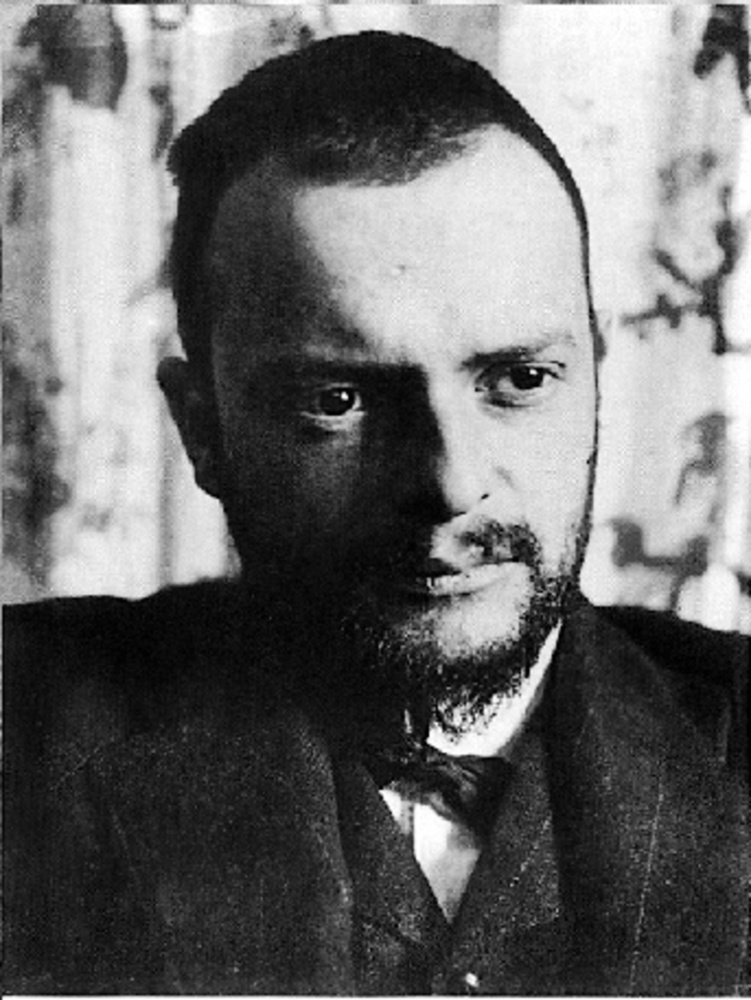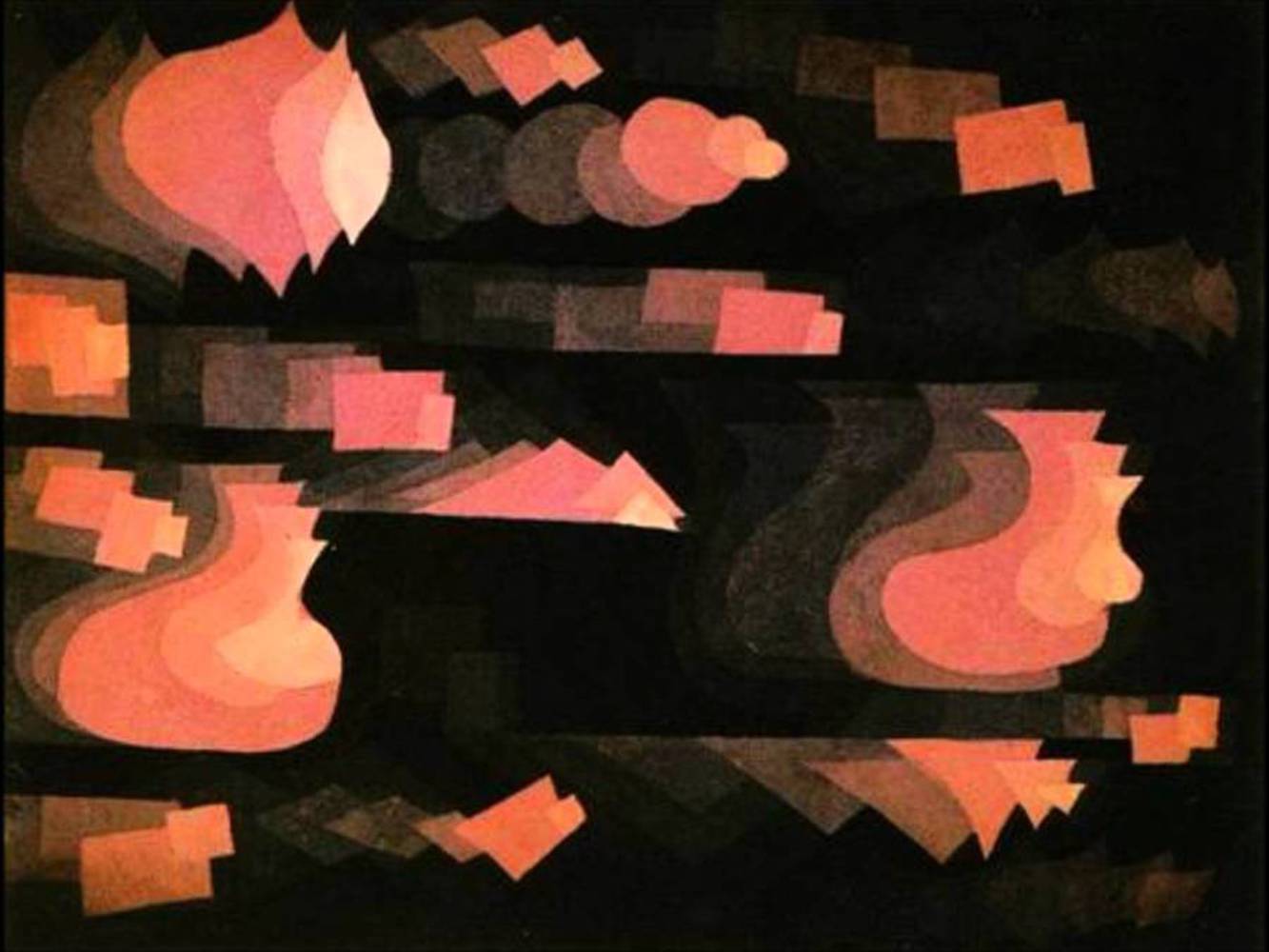Outcome
Paul Klee was born in Switzerland in 1879 as the son of a music teacher and a soprano. At a young age he was a talented violinist. Though he was very talented in music, he chose to rebel against his parents by entering visual arts, and studied at the Academy of Fine Arts in Munich in 1898. He was talented at drawing, but noted on a trip to Italy that he would struggle with colour. In 1912 he met the members of the Der Blaue Reiter and began to experiment with abstraction. In 1914 he went to Tunisia and there discovered color, and started painting in watercolour. He served in WWI, and created lithographs of his experiences. In 1919 he applied to teach at Stuttgart, but failed. In 1921 he taught at the Bauhaus where he taught for 10 years and joined the Die Blaue Vier in 1923. In 1931 he taught at Düsseldorf Academy until 1933, when he was fired from his job by the Gestapo. He moved back to Switzerland and died of a wasting disease in 1940. Paul Klee started a diary in 1897, which he kept until 1918, and wrote various publications, lectures, and theories. As an artist he was very prolific, with over 9000 works.
Paul Klee was born to a musician family, and his works were greatly influenced by musical theory and tonality. He was highly experimental, drawing caricatures as a young child, experimenting with zinc plate etchings with which his famous Inventions series was created. He experimented with Cubism and watercolours, as well as abstract painting. After his breakthrough with colour, Klee's fascination with colour and his foundation in music was expressed in the palates he used, with dissonant chords and colors working together, or assonant color palates used like the major chords in a scale. Oftentimes Klee would experiment with many mediums, using different bases for canvas such as gauze, cardboard, metal foils, fabric, and newspaper. He also used different methods such as spray paint, oil with watercolour, and more. He was a diverse artist, often drawing upon his background as a draftsman and musician, often including symbols and musical notation in his works. He was also very fascinated with the drawings of children, and often used a childish style of drawing.
I decided to look at these two pieces, which exemplify Paul Klee's experiments with Abstraction and his bond to drafting and music. The Fuge in Rot is a painting in watercolour based off of the ornamental Fugues of the Baroque period, where a single ornamented melody is introduced, developed, and recapitulated. This is evident in the repeating afterimages behind each shape, denoting the repeating melody of a fugue. Each melody is varied, leading to different shapes, but all are repeated at some point in music, which is reflected in painting. As each melody and harmony is repeated in the fugue, it's dynamic is softened, which leaves the echo-like effect in both music and painting. The stark contrast in color, a bright red against black, is perhaps a tribute to Johann Sebastian Bach, one of Klee's favorite composers, who was fond of minor keys. A minor key is usually darker sounding, stark, and often used in more somber music. This play on chiaroscuro vividly brings out the sounds of a fugue, where each melody is introduced loudly, then fades away into almost silence.
I also looked at another piece by Paul Klee, created in the same year. (From the Song of Songs) Version II ((Aus dem hohen Lied) (II. Fassung)) is an ink and watercolor on paper, with watercolor on cardboard piece based off of Klee's father's paraphrase of the 2nd and 3rd verse of the first chapter of the Song of Songs. You can see that Klee employed his draftsmanship in the piece, using the verses that his father paraphrased, the words are exhibited. The palate is colorful, with hues of reds and blues and purples, oftentimes opposing colors next to each other to create contrast. The lines which the words reside resemble the bars of a musical score, and brings to mind lyrics of a lieder or aria. The leaflike, sculpted lines at the corners of the piece resemble the shape of a violin or cello, and the watercolours blend in a way that references the chords and harmonies of a song,
My first response to Fuge in Rot was that it was a bunch of repeating red shapes. However, after taking a closer look at the image, I felt a morbid sense from the piece, akin to that of Johann Sebastian Bach's Bist du Bei Mir, a beautiful funeral march, asking if someone would be with them at their death, which came with the color tones of red fading to black. It also brought to mind the piece from Les Miserables, Red and Black, with a repetitive melody and chorus, with variation in wording. The shapes are akin to a singer shaping each vowel and sound to keep the audience interested in a repeating melody, or a fugue's internal variation to grab the attention of an audience and keep it
My first response to (From the Song of Songs) Version II ((Aus dem hohen Lied) (II. Fassung)) was that the words looked like they came from a German Lieder, perhaps something from the Romantic period. There was a lot of lieb and lieblich, so I thought, a picture about a song about love. The colors, bright compared to the brown and subtle backgrounds, drew attention to the words rather than the lines and designs around them. I was surprised that the o in Ol did not have the accent above the letter, but rather inside of the letter. It is reminiscent of a face, or perhaps a whole note.
With the two pieces and music as inspiration, I created a mix of music. I used Klee's inspiration for Aus dem hohen Lied (II. Fassung) by using the verses that Klee used for the main melody that I sang. The melody itself was random and in E minor. From the Fuge in Rot I took fugues by Bach, a source of inspiration for Klee, who was fascinated with the meter of music, and especially from the Baroque and Classical period. To emulate the style of Klee, and that of a Fugue from the two pieces, I used Bach's Fugue in E minor and his Tocatta in E minor to mix the sound. The reason for the E minor is so I didn't have to modulate between two potentially dissonant scales, so since both were in E minor they should, in theory, harmonize. I cut and copied pieces of the two pieces so that they repeated and overlapped together like a fugue. The sung melody repeated with different verses, and I cut and copied parts of the instrumental pieces so that the volume at which they played during the sung parts depended on the tempo of the pieces. The quicker the succession of notes, the quieter. I also brought out repeating melodies in the Tocatta, like the bright red shapes fading in Fuge in Rot and the colors which emphasized certain words in Aus dem hohen Lied.
One thing I would really like to have is a lot more time, mixing takes a LOT more time than I originally thought. Next time I will also look at what the tempo of each piece is beforehand, because mixing three different pieces that are all going at different tempos does not sound good at all and listening to the product makes me cringe internally every time. I think I also need to work on getting specific melodies and chords to line up, so actually spend more time looking at the score to see where pieces could line up together to produce good sounds that burst and fade into the background would be better. Also, it would be probably better to actually plan out the melody that I would sing or simply use a premade lieder or song instead of just making up the melody on the spot -because once it was done there was no turning back really, especially with only an hour. I think, that I successfully portrayed perhaps content and inspiration, but I don't think I quite accurately placed style. I would have to chop up the sung melody instead of leaving it as one whole to bring out the abstract quality to the piece. The instrumental parts I believe worked well, disregarding the tempo issue. Perhaps spend more time analyzing each piece for the main melodies, the development, and recapitulation sections for a better and more varied mix, and look more into the rhythm of the pieces and tone quality of different instruments for more colour palettes to paint sound with.
You can upload files of up to 20MB using this form.


